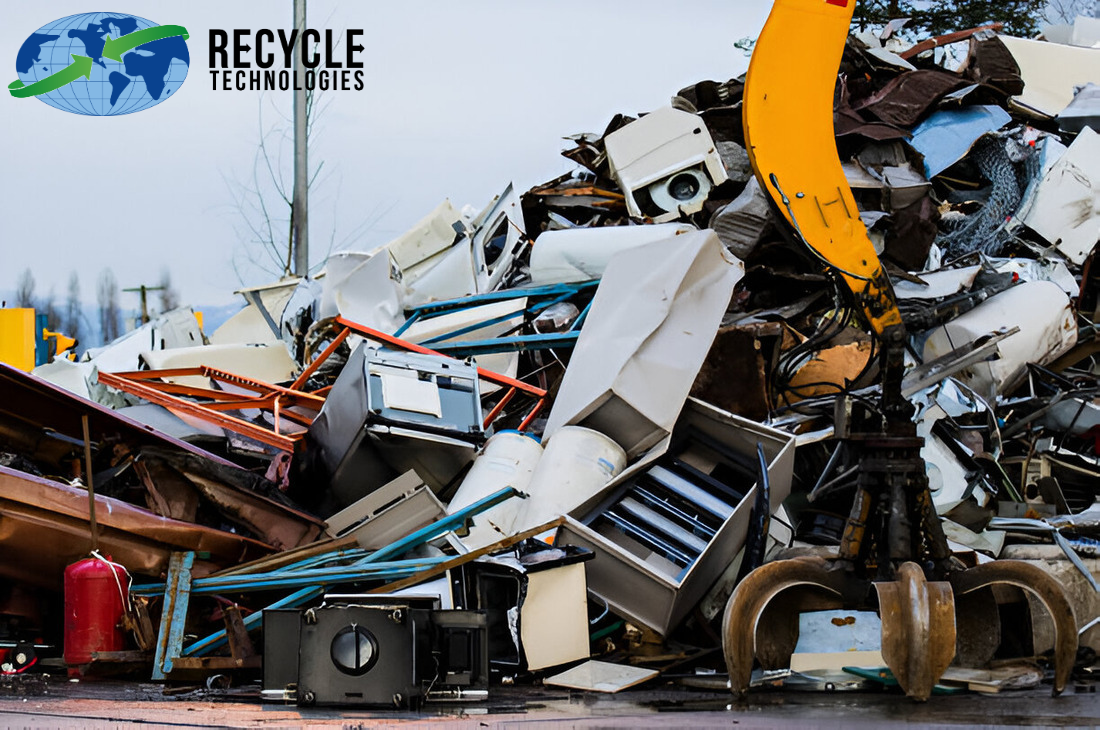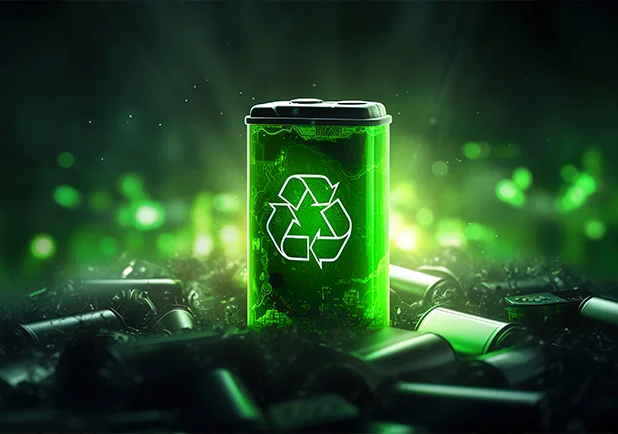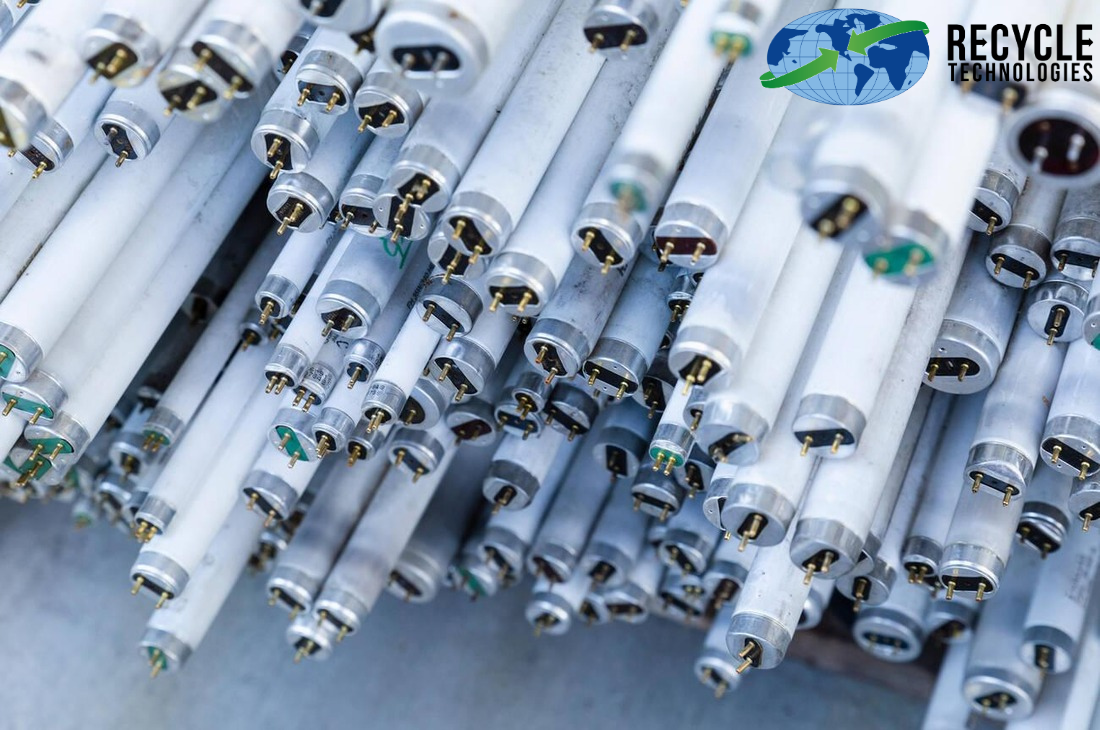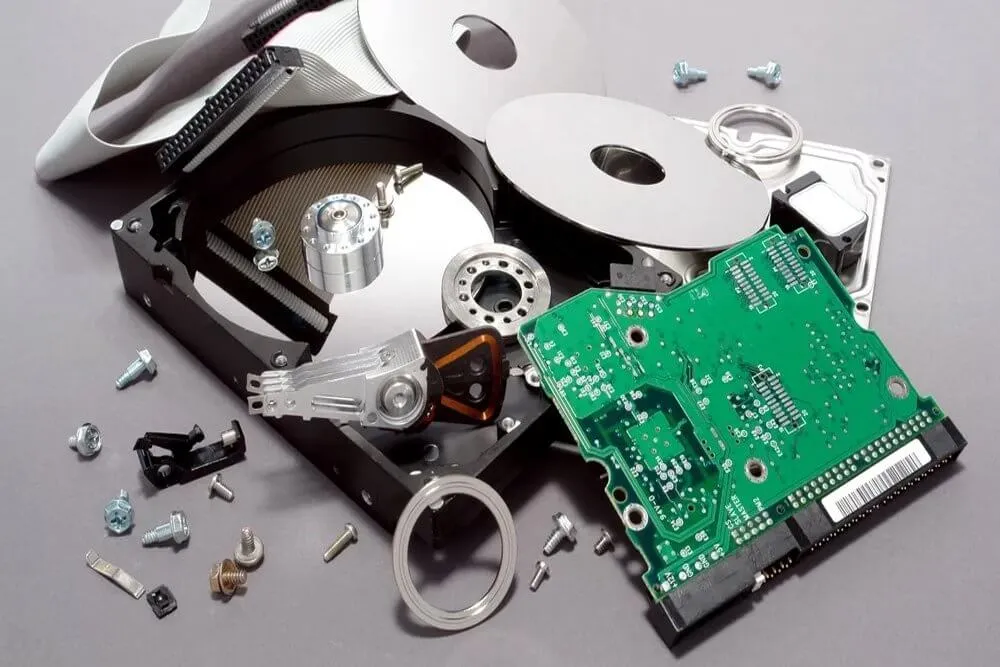The amount of E-waste produced globally has skyrocketed in recent years due to advancements in technology, easy accessibility due to reduced costs, shifts in the media industry, and a myriad of electronic options available for data storage. Keeping this in mind, E-waste is now considered to be the world’s most explosively growing waste stream due to the following two reasons:
- Higher than ever demand for electronics
- Shorter product life cycles
The magnitude of the amount of E-waste produced can be estimated by a report published by Dell Technologies stating that 53.6 million tons of electronics are disposed of as E-waste annually.
Despite the abundance of E-waste, only a fraction of its amount is recycled. For instance, in 2019 only 17.4% of e-waste was collected for E-waste recycling out of a staggering 53.6 million tons which were produced that year. These stats point out that a considerable number of valuable metals and other recyclable materials are wasted instead of being recovered and reused.
This brings us to the question: what is E-waste recycling, how is it carried out and what are the benefits of recycling E-waste? Read on to find answers to all these questions.
What is E-Waste Recycling?
Electronics recycling is also sometimes referred to as e-waste recycling or electronic waste recycling. It involves dismantling old electronics into their parts and using them to recover valuable metals and other in-demand recyclable materials. The extracted material can then be used to manufacture new electronic devices.
Is it Really Necessary to Recycle E-Waste?
Before we explore how e-waste recycling is done, let’s investigate why it is important to do so. Responsible disposal of e-waste helps to reduce the carbon footprint while also keeping numerous high-value resources in circulation.
Businesses and consumers across the US are now more aware of the uncountable environmental and health hazards that dumping e-waste into landfills is associated with and are striving to adopt eco-friendly e-waste disposal practices that involve recycling of e-waste.
In the modern era, if we do not make our E-waste management systems scalable to tackle the increasing burden this waste stream is putting on the environment, we might soon be struggling to keep up with our consumption of the earth’s natural resources.
Common E-Waste Items
The first things that come to your mind when you think about E-waste items are probably your laptop and cell phone. Without a doubt, these are an excellent choice for E-waste recycling, yet there are scores of other electronics that can be recycled.
Some of the most common among these are:
At Recycle Technologies, we recycle all these and more electronic equipment at our licensed recycling facilities in Minnesota and Wisconsin.
The On-Going State of Electronic Waste Recycling
The US is the second largest producer of e-waste after China, producing around 64 tons of e-waste per person. Only a minute fraction of this amount is recycled, and the rest is conventionally dumped either in landfills or incinerated.
Although there is currently no federal law in the US that dictates E-waste recycling, enterprises, and businesses are turning towards responsible disposal of e-waste as more recycling facilities with easy-to-use recycling kits are becoming widespread.
Using these services, consumers can collect their e-waste and send it off to the designated recycling plants or drop off their e-waste themselves at the e-waste recycling facilities.
How is E-Waste Recycling Carried Out
In the complete sequence of E-waste recycling, the process comprises five essential steps. Let us delve into each process in more detail.
1-Collection
The first step in this process entails the collection of e-waste from different sources. These can either be specially allocated e-waste bins set up by the local government or recycling companies.
Recycling companies offer multiple services for the collection and recycling of E-waste products including drop-off programs, collection services by their staff, and mail-in programs involving user-friendly recycling kits.
Ideally, the waste is manually sorted at this stage based on the type of e-waste. This is important to maintain safety standards of E-waste recycling.
For example, used batteries are a type of electronic waste that needs careful handling to prevent fires and explosions. Therefore, separating such types of waste from other E-waste sources is crucial.
2-Storage
Since E-waste recycling is much more complex compared to conventional recycling, this step is hence pivotal. Some components of electronic devices may not be recyclable, and these are kept in storage by the recyclers.
For instance, in the past, the glass screens of televisions and monitors were utilized to manufacture new computer monitors. But with the recent surge in more advanced TV and computer screens being produced, these glass screens are now rendered useless.
3-Physical Sorting, Dismantling & Shredding
Manual sorting is the first of a two-step separation process. Over here some old electronic equipment is separated for individual recycling e.g. lithium-ion batteries. Furthermore, during this stage, the e-waste undergoes dismantling to be broken down into individual parts. These parts are then recycled, and valuable material is recovered from them.
Following this, the E-waste is shredded into numerous tiny pieces for a more precise sorting of parts. This helps in the next phase of E-waste recycling as each individual dismantled part is sorted using mechanical sorting procedures.
4-Mechanical Sorting
Mechanical sorting of e-waste involves a series of chain reactions. The most prominent processes during this step are magnetic separation and water separation.
Magnetic Separation
First, an enormous magnet is used to attract all the ferromagnetic material present within the shredded E-waste. This can include metals like iron and steel which have a high affinity for magnetization.
Secondly, the E-waste goes through more mechanical separation by passing an Eddy current through the mixture of remaining material to single out alloys and other metals that are weakly attracted to magnets.
Once the metals are separated, the E-waste concoction will only consist of non-metallic materials like plastics, etc.
Water Separation
Next, the E-waste is further treated with water to enhance the process of mechanical separation. At this stage, only the non-magnetic materials remain, and they go through a water-filled machine that separates them based on their relative densities.
Materials with a low density, mostly plastics, will flow and materials with a high density e.g. glass will sink to the bottom.
5-Recovery
At this stage, the recovered materials are ready to be reused and resold. However, before they are sold off, they undergo a final check to ensure there are no contaminants stuck to them.
Key Benefits of Recycling E-Waste
E-waste recycling not only reduces electronic waste but also incorporates resource utilization. This is essential for sustainable development and a healthier planet. In this section, we explore the advantages of recycling E-waste.
Minimizes Pollution
E-waste reaching landfills can be hazardous as toxic substances from electronic waste can leech into groundwater resources and pollute them. In addition, the toxins in e-waste can also contribute to soil contamination and put countless living organisms at risk.
E-waste recycling alleviates the hazardous environmental impact that these toxins have and serves to reduce groundwater and soil pollution.
Contributes to Environmental Conservation
Another fundamental benefit of E-waste recycling is the preservation of natural resources. Manufacturing new electronic equipment like batteries involves the extraction of a significant number of precious metals through mining.
By recycling old electronics much of these metals can be recovered and can be used to produce new electronics at a much cheaper cost while maintaining environmental sustainability.
Creates Employment Opportunities
The E-waste recycling industry creates a plethora of jobs for the local people. From collection, sorting, disassembly, and recycling a variety of workers are employed in recycling plants all over the US.
Conclusion
To summarize everything, recycling E-waste not only lessens the harmful environmental impact but also protects us from toxic substances entering our bodies because of pollution. In addition to this, the economic gains associated with E-waste recycling are enormous too.
It is a practice that needs to be more widely and readily adopted if we aim to reduce the growing stream of E-waste. With better recycling facilities and enhanced awareness among the community, the benefits of electronic waste recycling can be maximized.
Recycle Your Electronic Waste with Recycle Technologies
At Recycle Technologies we aim to create a world without waste and pave our way towards a more sustainable future. Our mail-in program makes it easier for businesses and individuals alike to manage their e-waste more responsibly.
Our experienced team is available to serve you regarding any information you may need to make the most of your E-waste recycling.









